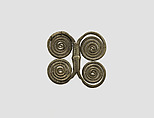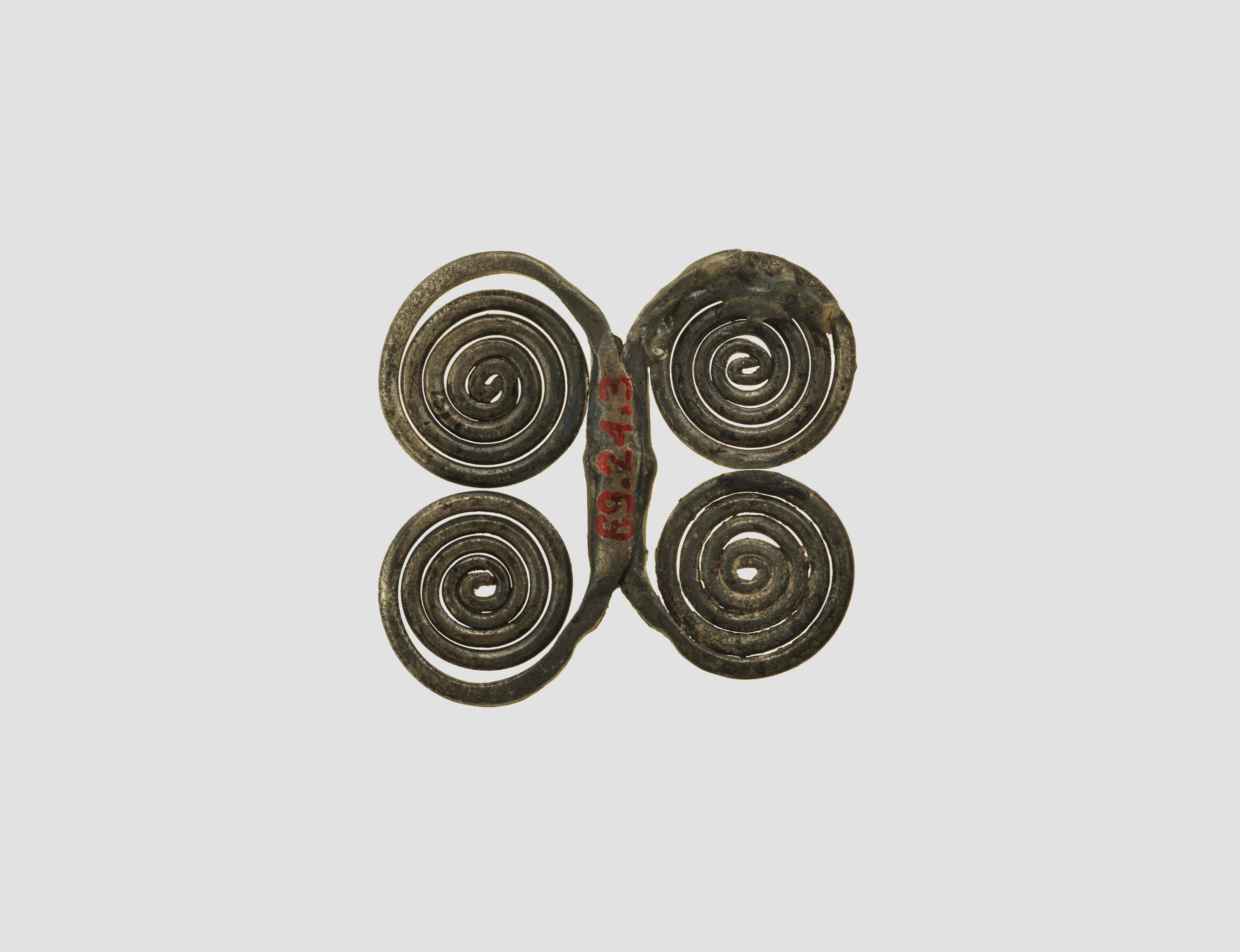Spiral bead
Not on view
This silver bead consists of a central tube with four coils emerging from it. It was excavated at Tepe Nush-i Jan, an Iron Age hilltop site about 60 km sound of Hamadan in western Iran. Nush-i Jan was occupied in the 7th and 6th centuries B.C., and its occupants are generally thought to be the Medes, an Iranian people known from Assyrian, Achaemenid and Biblical sources. Though the textual sources portray them as a powerful empire, archaeological evidence for the Medes has yet to sustain this impression. Rather, they seem to have lived in scattered fortified sites in western and central Iran, without any clear capital. Nush-i Jan, one of the best known of these sites, features two temples, a columned hall, and a fort, where the bead was found.
The bead was discovered in a bronze bowl containing 231 pieces of silver, including jewelry, ingots and scraps. At the time coins were not yet in use in Iran, and silver bullion was the primary form of money. The form of the silver did not matter, only the weight, so any silver object, including jewelry, could potentially be used as money. To make a payment, one would weigh out a certain quantity, and to make an exact amount it was sometimes necessary to cut silver into smaller pieces, which is why the hoard includes scraps of metal. It was found below floor level, suggesting that it was hidden for safekeeping. Whether its owner did this as a long-term storage strategy or in response to an emergency is unknown.
Quadruple spiral beads are well-known in the Near East in the late third to early second millennium B.C., thousands of years earlier than the occupation of Nush-i Jan. This raises two possibilities: (1) that this bead was already an antique when it was added to this hoard, or (2) that spiral beads continued to be made for a very long period of time. Since there are other, much older objects in the hoard, the first possibility seems likeliest.
Due to rights restrictions, this image cannot be enlarged, viewed at full screen, or downloaded.
This artwork is meant to be viewed from right to left. Scroll left to view more.



